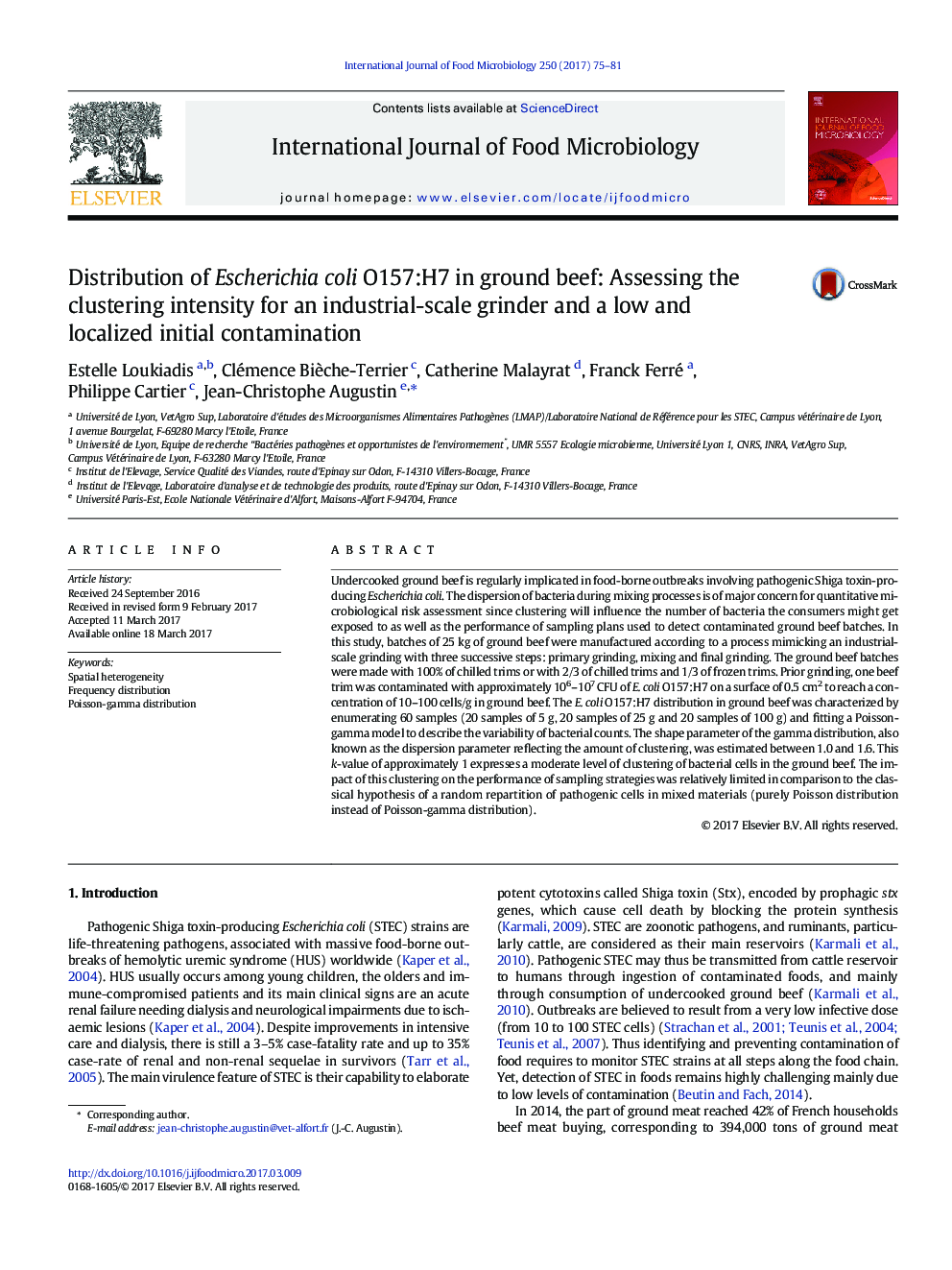| Article ID | Journal | Published Year | Pages | File Type |
|---|---|---|---|---|
| 5740749 | International Journal of Food Microbiology | 2017 | 7 Pages |
â¢Industrial grinding process leads to a relatively homogeneous distribution of E. coli O157:H7.â¢The dispersion parameter k of the gamma distribution is equal to 1 in ground beef.â¢The Poisson hypothesis is acceptable when assessing sampling plans efficiency.
Undercooked ground beef is regularly implicated in food-borne outbreaks involving pathogenic Shiga toxin-producing Escherichia coli. The dispersion of bacteria during mixing processes is of major concern for quantitative microbiological risk assessment since clustering will influence the number of bacteria the consumers might get exposed to as well as the performance of sampling plans used to detect contaminated ground beef batches. In this study, batches of 25Â kg of ground beef were manufactured according to a process mimicking an industrial-scale grinding with three successive steps: primary grinding, mixing and final grinding. The ground beef batches were made with 100% of chilled trims or with 2/3 of chilled trims and 1/3 of frozen trims. Prior grinding, one beef trim was contaminated with approximately 106-107Â CFU of E. coli O157:H7 on a surface of 0.5Â cm2 to reach a concentration of 10-100Â cells/g in ground beef. The E. coli O157:H7 distribution in ground beef was characterized by enumerating 60 samples (20 samples of 5Â g, 20 samples of 25Â g and 20 samples of 100Â g) and fitting a Poisson-gamma model to describe the variability of bacterial counts. The shape parameter of the gamma distribution, also known as the dispersion parameter reflecting the amount of clustering, was estimated between 1.0 and 1.6. This k-value of approximately 1 expresses a moderate level of clustering of bacterial cells in the ground beef. The impact of this clustering on the performance of sampling strategies was relatively limited in comparison to the classical hypothesis of a random repartition of pathogenic cells in mixed materials (purely Poisson distribution instead of Poisson-gamma distribution).
